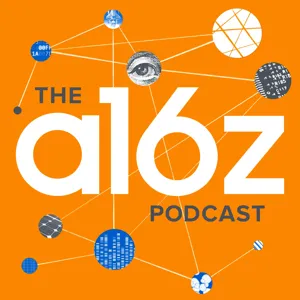Podcast Summary
CAR T therapy: A new medical paradigm for cancer treatment: Groundbreaking CAR T therapy uses engineered T cells to detect and destroy cancer cells, offering hope for refractory leukemia patients. Developing, manufacturing, and delivering this treatment requires a deep understanding of science, business, and logistics.
CAR T therapy represents a groundbreaking new medical paradigm for cancer treatment. This innovative approach uses engineered T cells, a type of white blood cell, to detect and destroy cancer cells. The process involves taking a patient's T cells, reengineering them with a unique "SIM card" that identifies specific cancer antigens, and then infusing them back into the patient's body. This therapy, which is known as chimeric antigen receptor therapy, has shown remarkable success in treating childhood leukemias and may even be a cure. The patient journey begins with a child diagnosed with leukemia, who initially responds well to chemotherapy but later becomes refractory and relapses. CAR T therapy offers hope for these patients by providing a potentially curative treatment option. The conversation between Timmunity CEO Oz Azam, general partner Jorge Conde, and host Hannah also touched on the development, manufacturing, and delivery of CAR T therapy, as well as the challenges of scaling this treatment for more types of cancer and making it more affordable. Building a company in this field requires a deep understanding of the science, manufacturing, and business aspects of CAR T therapy.
Engineering Patients' Immune Cells to Fight Cancer: CAR-T cell therapy involves engineering a patient's own immune cells to fight cancer, with a process that includes drawing blood, apheresis, reengineering, freezing, shipping, chemotherapeutic regimen, and infusion, aiming for a persistent and durable cure, despite challenges in scaling the infrastructure.
CAR-T cell therapy is a revolutionary medical treatment that involves engineering a patient's own immune cells to fight cancer. The process begins with drawing a patient's blood to check for the presence of a specific marker. If the marker is found, the patient's white blood cells are harvested through a process called apheresis and sent to a manufacturing facility for reengineering. The cells are then frozen and shipped back to the patient, who undergoes a mild chemotherapeutic regimen to prepare their body for the infusion. The engineered cells multiply rapidly and attack cancer cells, releasing toxins that can cause a cytokine storm. This storm is monitored closely as it indicates the therapy's effectiveness. The entire process takes about a month, with the goal of achieving a persistent and durable cure. However, scaling this complex process to build the necessary infrastructure is a significant challenge. In 2013, the facilities for manufacturing CAR-T cells were small and rudimentary, but advancements continue to be made in this new and exciting area of medicine.
Manufacturing Challenges in Cell and Gene Therapies: Cell and gene therapies require extensive vertical integration for quality, affordability, and scalability due to their complex nature, involving patient journey, cell logistics, adverse event management, and technology integration. Lack of robust manufacturing capability could lead to ethical concerns and missed opportunities in personalized medicine.
The development and commercialization of cell and gene therapies require a high degree of vertical integration, particularly in manufacturing, to ensure quality, affordability, and scalability. This is due to the complex nature of these therapies, which involve managing the patient journey, cell logistics, adverse event management, and the integration of technology. The lack of a robust manufacturing capability could lead to ethical concerns and missed opportunities in the rapidly evolving field of personalized medicine. Developing these therapies against established paradigms and regulatory frameworks presents unique challenges, but the potential rewards, including curative treatments, make the journey worthwhile.
Engineering cells for solid tumor cancer therapy: Advancing solid tumor cancer therapy involves engineering cells for increased functionality and affinity tuning. Multiple warheads and co-stimulation are essential steps, while reducing costs depends on engineering advancements and targeting multiple antigens.
Advancing cell and gene therapy to cure solid tumor cancers, which have an even greater unmet need than hematological cancers, requires engineering cells for increased functionality and affinity tuning. The development of multiple warheads, targeting more than one protein or antigen, and co-stimulation to power up and armor cells against immunosuppression are essential steps. The process is compared to software development, where each generation builds on the previous one, with modular components that can be swapped in to increase functionality. Affinity tuning, which ensures the right amount of binding between the t cell and target, has been a game-changer in t cell engineering. Reducing costs will depend on engineering advancements and targeting multiple antigens in certain cancers, like glioblastoma, where attacking several surface marker proteins is necessary for patient benefit.
Gene therapy and cell therapy advancements in cancer treatment: Advancements in immunosuppression, payload delivery, and off-the-shelf products are driving progress in treating a wider range of cancers. Early intervention and scale/cost reduction through gene editing are also important.
The field of gene therapy and cell therapy is rapidly evolving, with advancements in immunosuppression, payload delivery, and the potential for off-the-shelf products leading to significant progress in treating a wider range of cancers. This includes the pivoting of principles learned from hematological malignancies towards solid tumors, the importance of getting these therapies to patients earlier in their cancer journey, and the need for scale and cost reduction through gene editing. Starting a company in this field within a large corporation versus from scratch comes with distinct differences, including the need for a highly motivated, personal team in a startup environment and the importance of understanding individual motivations and strengths in the recruitment process.
Starting and growing a bio company: Overcoming challenges and building a successful team: Patience, tenacity, and effective team building are crucial for starting and growing a bio company, despite challenges like intellectual property issues and unexpected experiment results. The industry is optimistic about increased investments to make these products successful without straining healthcare budgets.
Starting and growing a bio company involves overcoming numerous challenges, from securing operations during the early stages to instilling discipline and building quality systems. Patience and tenacity are crucial during this process, especially when facing setbacks like intellectual property issues or unexpected experiment results. The next phase involves hiring the right team members and figuring out their roles, which can be challenging due to cultural differences and the need to integrate clinical thinking with manufacturing science. The end goal is to demonstrate the effectiveness and manufacturability of therapies, but the commercial success of these products has not lived up to expectations due to the complexities of introducing a new order in medicine, including physician payment models, healthcare system investments, and infrastructure costs. However, the industry is optimistic that players will increase investments to make these products successful without breaking healthcare budgets, and the cost of goods has already begun to decrease.
Optimizing cell therapies with AI and data integration: Cell therapies' optimization involves data access, AI integration, and patient, commercial, and cell journey improvements. High clinical and reimbursement bars slow acceptance, but curative potential expedites it. Payers reluctance to upfront costs leads to alternative reimbursement models and pay-for-performance.
The optimization of cell therapies is on the horizon, but requires access to large amounts of data and the integration of AI and adjacent thinking into the patient journey, commercial journey, and cell journey. The acceptance of new therapies in the biotech industry comes with high clinical and reimbursement bars, but the potential for demonstrating a cure can expedite this process. For example, CAR-T therapy for pediatric leukemia, which has shown incredible effects, was quickly accepted due to its curative potential. However, payers have been reluctant to bear the upfront cost of these high-priced therapies, leading to the need for alternative reimbursement models and the ongoing decrease in manufacturing costs. The industry is moving towards pay-for-performance models and forecasting collaborations with companies to manage future costs. Ultimately, the optimization and acceptance of cell therapies will bring significant improvements to healthcare, but it will require ongoing collaboration and innovation.
Embracing curiosity, humility, and collaboration in biotech: To succeed in biotech, engage with payers and advisers, be open to new ideas and collaborations, build a diverse team, seek external advice, and remain curious, humble, and agile.
Staying ahead in the biotech industry requires a combination of curiosity, humility, and the right team. The speaker emphasizes the importance of engaging with payers and advisers early on, and being open to new ideas and collaborations. He shares his experience of building successful companies in the field, and reflects on the importance of having a diverse team and seeking external advice to accelerate growth. The speaker also highlights the unpredictable nature of scientific discoveries and the importance of institutional memory. Ultimately, he encourages entrepreneurs and founders to remain curious, humble, and agile in order to stay competitive and make a positive impact in the world of biotech.




